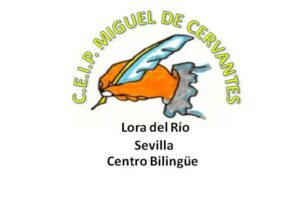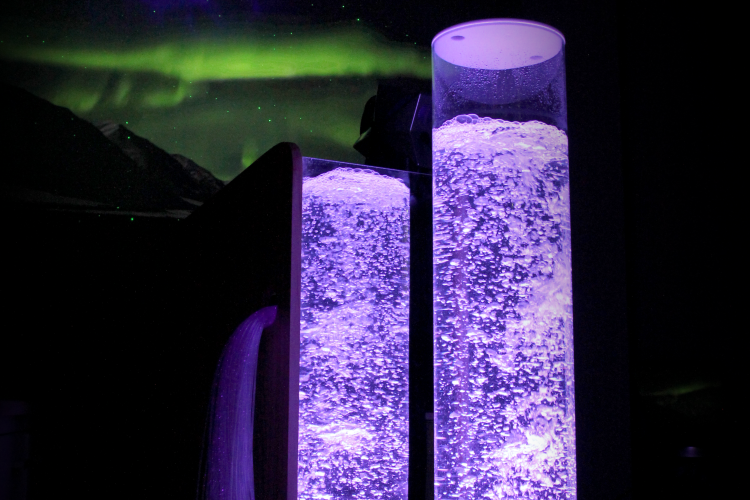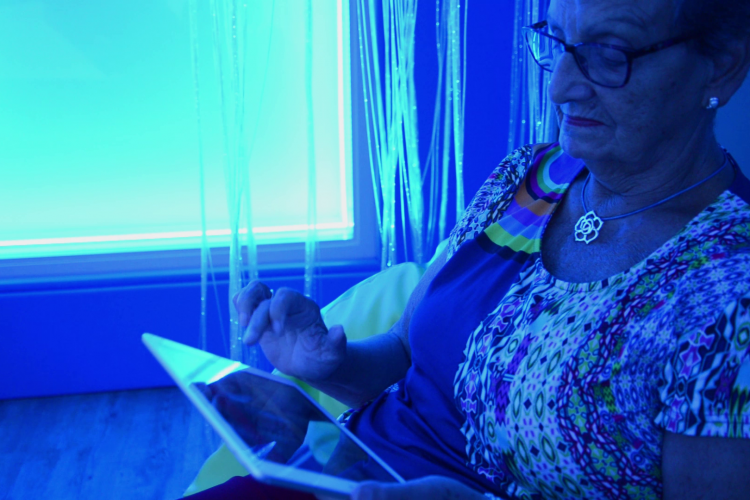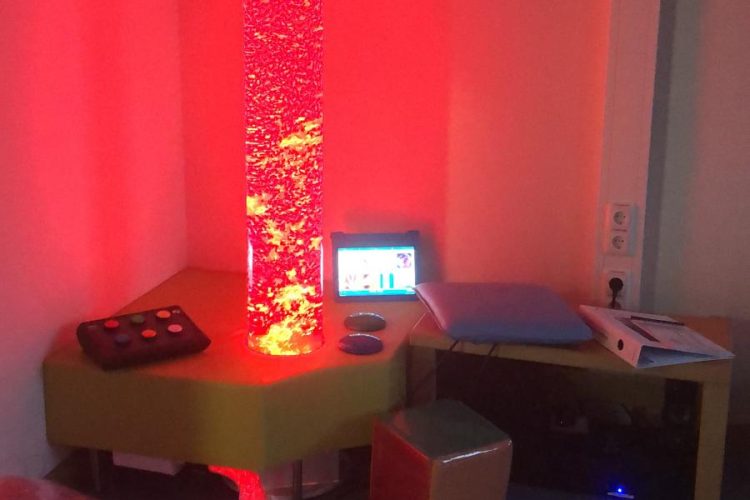Jennifer Arellano
Social Media & Content Manager at Qinera
Read more postsI am Maria Jesús, a teacher of Hearing and Language, and last year I arrived permanently at CEIP Miguel de Cervantes in the town of Lora del Río, in Sevilla. I started working with the students in the special education classroom, and soon I had the feeling that the classroom resources were limited, insufficient for the needs of our students.
One day, while organizing what would be my new classroom, I found a brochure from Qinera (formerly BJ Adaptaciones). Sometimes things appear at the right moment, and that brochure appeared to address my concerns. In this article, I am going to tell you how we got the funding to create our multi-sensory room and the first steps we have undertaken.
I contacted them for advice, and soon I received a call from Bibiana Escribano, an occupational therapist and my special angel, who appeared to guide me. She proposed creating a sensory classroom project, guaranteeing that she would be by my side to support me at all times.
“Bibiana Escribano accompanied me throughout the process and created a personalized room project, adapted to our needs and those of our students.” -Maria Jesús
Not only did she create a personalized project without any commitment or cost, but she also informed me about the deadlines for various public tenders so that I could register and seek funding for the multisensory classroom project that Qinera had designed for our students: tailored and meeting our therapeutic needs.
In November 2021, the Andalusian Regional Ministry published the ‘Impulsa-Inclusión’ program, and thanks to the European Social Fund, we received financial support to follow inclusive guidelines. Thanks to this contribution, we were able to have our customized multisensory room and started with our sensory workshop project. In less than six months from the first contact, our concerns were addressed, and we obtained an incredible working tool.
The main purpose of sensory workshops is to improve the quality of life for children, working on sensations and perception, as they are fundamental human capacities. The goal is to enhance the assimilation of sensory information offered to them, optimizing their relationship with the environment and their learning. In an environment with controlled stimuli, sensations are explored, discovered, and enjoyed by students through their freedom to explore. Thanks to this project, we have been able to design inclusive activities:
The sensory theaters we have carried out so far have been related to the themes of different projects implemented at the school, such as “Save the Earth: Marine Life and Forests” and “The Chef and the Cook.”
For the development of these workshops, diverse materials were used, including a LED UV spotlight and UV materials. The students enjoyed storytelling related to the themes while discovering different sensations through their senses (smell, touch, sight, etc.).
In this video, you can see the workshop of the “Save the Earth” project, which included the participation of Alicia Bululú, a local actress who transported the students through the universe and, in turn, went down to the seabed, highlighting the importance of recycling for the care of this ecosystem.
A theme that the students had worked on a lot in the previous term, which, thanks to the sensory theatre and the staging of the universe and the seabed through the black light, constituted a unique experience, adapted to the needs of the students.
To celebrate Halloween, a series of workshops related to the theme were organized. Since our school has a sensory room where highly motivating activities can take place, we utilized it for one of the workshops called “Terrifying Masks.”
The students had to decorate a mask with fluorescent paint and then enter the sensory classroom and project them with the ultraviolet black light; they could also paint their arms and hands.
The 4th-grade students learned about the bones of the hand by painting their own hands with fluorescent paint. They also studied the skeletal system in a foreign language (English), creating a fluorescent skeleton. This experience is something they will never forget.
Every day, we go to the sensory room to work with students from the specific classroom. Depending on each student’s characteristics and needs, we prioritize sensory stimulation (auditory, visual, and tactile) for them. Through the localization of different visual and auditory stimuli, we work on attention, visual contact, eye tracking, and more.
In these individual sessions, we use materials such as the bubble tube, among others. Thanks to the tablet and Luminea App, we can create cause-and-effect activities. The student touches the tablet screen and is able to select a color (either by their own choice or following instructions), and the tube changes to that specific color. For example, we can say “touch the banana” or “press the yellow,” and the bubble tube turns yellow.
We also use this element to work on vocabulary, comprehension of instructions, and any content related to the theme we are working on in the classroom. Thanks to this resource, we have been able to capture the attention of our students and regulate their behaviour in certain moments, achieving unimaginable accomplishments.
In this initial phase, the room has a bubble tube and a fiber optic, as well as UV light elements and materials, along with a massage kit. As the needs grow, and as long as we secure funding, we are confident that our room will expand to continue providing a safe environment for our students.

This article has been written by members of the teaching team at CEIP Miguel de Cervantes in Lora del Río (Seville) and reviewed by Qinera’s marketing team.
If you want to learn more about the benefits of Multisensory Environments or see how you could adapt it to your space, therapeutic goals, and users, you can send an email to hello@qinera.com.

22 October 2024
At Qinera, we are always searching for innovative solutions to improve the quality of life of people and the environments in which they interact. That’s...

18 September 2024
Currently, new technologies are playing a fundamental role in improving the health and well-being of the elderly or dependent individuals. Among the numerous innovations and...

23 April 2024
It all started back in Germany, when our partner Rehavista began an amazing journey with Qinera’s Luminea Corner, full of possibilities for transformation. They were...